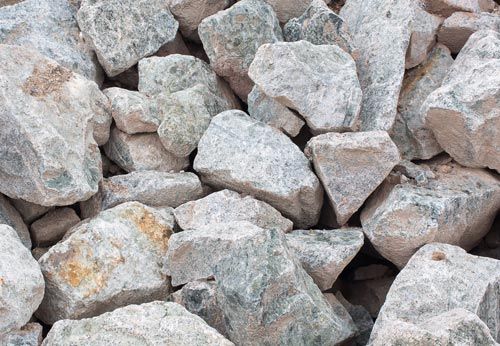
Crushed gravel aggregate plays a vital role in the construction and paving industries - so much so that contractors often keep stockpiles of this key material either on a job site or at their company's home base. While having a ready supply of aggregate can be useful, you must be sure to maintain your stockpiles carefully.
Contractors who neglect proper stockpile management techniques often end up dealing with serious quality control problems down the line. In some cases, poor stockpiling can render an aggregate supply virtually unusable.
If you own a company that uses aggregate, keep reading. This article takes a closer look at three common stockpiling problems to be aware of.
1. Segregation
An aggregate dealer usually keeps their supplies stockpiled according to size. Different piles correspond to average diameters of the aggregate pieces. When a paving contractor puts in an order for a particular aggregate mix, the dealer adds together the appropriate amounts of each size of aggregate and delivers them as a mixture.
This method spares contractors the work of mixing together different aggregate sizes when the time comes to create a batch of paving material. Unfortunately, however, the longer a mixed stockpile sits in place, the greater the chance it succumbs to the phenomenon known as segregation.
Segregation involves the gradual separation of aggregate particles according to size. In other words, smaller pieces of aggregate tend to migrate downward through the stockpile, slipping through the cracks between larger particles. If you happen to use the entire stockpile at one time, this shouldn't pose a problem, since the aggregate will become evenly dispersed during the mixing process.
However, if you plan to only use part of your stockpile at any given time, segregation may mean that your pavement ends up with inadequate aggregate size variation. As a result, the pavement may not perform to the desired specifications.
The greater the size range of the aggregate, the more likely segregation is to cause problems.
2. Contamination
Contamination refers to the phenomenon of foreign materials making their way into a given stockpile. In some cases, such outside materials may take the form of trash or construction debris. Likewise, natural materials such as leaves, twigs, or grass clippings can contaminate a stockpile and have a negative effect on the resulting pavement.
An even more common form of contamination involves aggregate from neighboring stockpiles. As loaders and work vehicles move on and around a stockpile, a certain proportion of aggregate naturally becomes displaced. If neighboring stockpiles happen to lie too close, the different aggregates may start to mix together.
Fortunately, this problem can be easily avoided by maintaining proper separation between stockpiles. As a general rule, maintain a distance of at least a single loader bucket between any and all of your open stockpiles. Also try to place them as far as possible from natural debris sources or other construction supplies.
3. Degradation
Degradation involves the breakdown of the aggregate within a given stockpile. Such breakdown may occur as the result of numerous different causes, with heavy equipment running over the aggregate being one of the most common. Other sources of degradation involve repeated loading and moving, excessive stockpile size, and prolonged environmental exposure.
Aggregate degradation changes the make-up of a stockpile. Degradation reduces the number of large particles and increases the proportion of fine aggregate. The dust generated as the result of degradation may also negatively affect the performance of the paving material by causing the material to absorb more moisture than expected.
While it may be impossible to eliminate stockpile problems entirely, wise paving contractors should have the skills to keep such issues within manageable levels. For more information about how to stockpile aggregate safely, please contact the sand and gravel experts at W R Beach, Inc.
